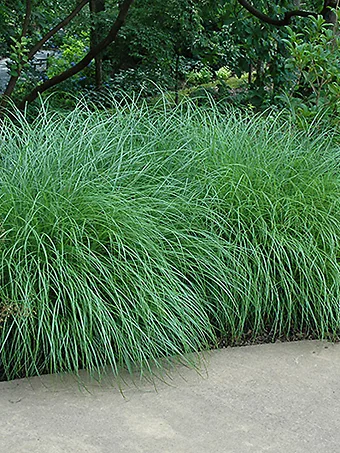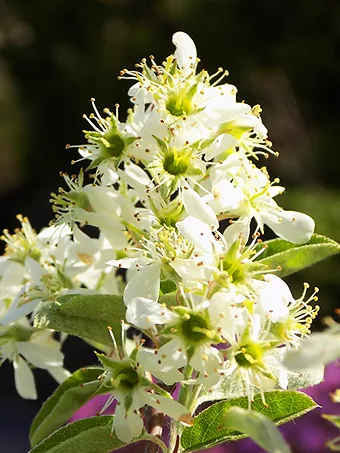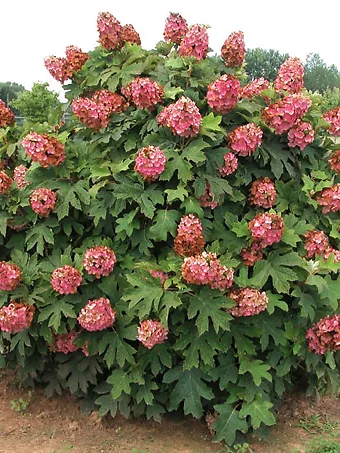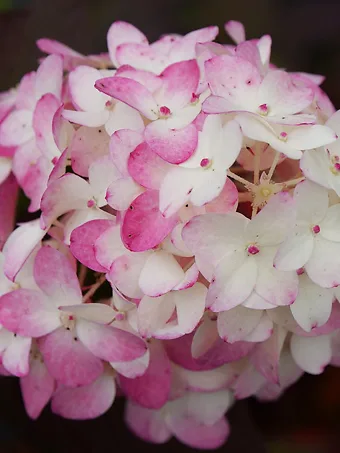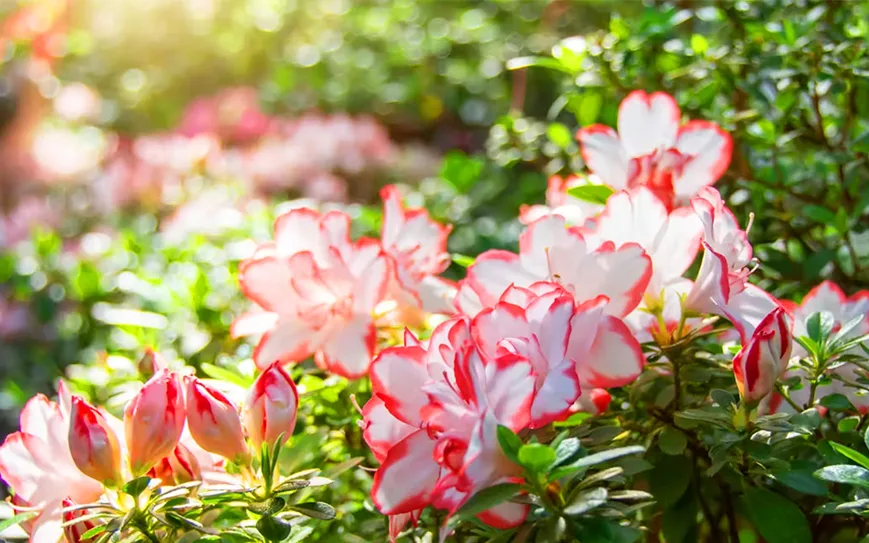
Written by s • Flowering Evergreens for Year-Round Interest
Winter is a time when the garden is quiet. Few shrubs or trees bloom, although in warmer areas there are a number that do – the fascinating Paperbush (Edgeworthia) for one. But for the most part our gardens in winter are a place for gentle reflection on the beauty of twigs, and the soft tones of green on our evergreens. For many, ‘evergreen’ brings an image of cedar or spruce, those plants more accurately called ‘conifers’, which have some kind of cone, rather than flowers, berries and seeds. Being evergreen is an option for all plants though, and some of the most attractive in the winter garden are not conifers, but ordinary shrubs and trees, best referred to as ‘broad-leaf’ evergreens.
Except in the coldest areas it is not difficult to plant a substantial part of the garden with these broad-leaf evergreens, and there is a good argument to be made for this kind of permanent background to the seasonal changes through the year. These plants, often with glossy, rich-green leaves, give stable structure to the garden, and look a lot more attractive in winter than the average deciduous plant does. Plus they usually have flowers – often spectacular – just as deciduous shrubs do, so they serve two jobs in the garden instead of just one.
If you are not looking forward to winter, because you know your garden will be nothing but bare twigs, and you find conifers stiff and un-interesting, then turn your mind to broad-leaf evergreen trees and shrubs, both for their winter interest and for their often spectacular flowering too.
Rhododendrons and Azaleas
Top of the list of flowering evergreens are the spectacular Rhododendrons. This group also includes the equally popular Azaleas, which are distinguished by their smaller, often slightly hairy leaves, and smaller flowers. For winter foliage effect this difference is pronounced. Rhododendrons usually stand tall in our gardens, reaching perhaps 6 feet or more, and their large leaves, which can be 8 inches long, create a bold visual effect. A good example would be that red-flowered garden classic the Nova Zembla Rhododendron. Growing in time to 8 feet tall, this plant not only makes a spectacular display in spring, it is also hardy right into zone 4, bringing evergreen winter foliage into a climate zone where the choices are more limited. Its bold, slightly glossy foliage makes a great permanent presence in the garden, thriving in partial shade in warmer areas, but taking full sun well in colder regions.
For a smaller garden, the Yellow Dream Rhododendron is a top choice, growing to just 2 feet tall, but making a broad bush up to 3 feet across. In spring its pale-yellow blooms glow in the partial shade it prefers, and it grows well in warm regions too, where many other Rhododendrons fail.
For a smaller garden, or for mass planting, azaleas offer interesting options. For a long time, like their rhododendron brothers, these beautiful shrubs only flowered in spring. Their foliage is smaller, and so less interesting, and many people didn’t grow them because of their limited flowering. Today, things are very different. We have a wide range of Azaleas, the Encore Azaleas, that flower not once, but twice in a year, They continue through the summer and right into fall, with flowers that add color and interest month after month. They come in such a wide range of colors and forms that really, no other azaleas are needed for most gardens.
Oregon Grape Holly
Growing native plants has become popular, since the escape of garden plants into natural areas is a growing issue for many gardeners. Some native shrubs are tricky to grow, but not the Oregon Grape Holly. It thrives in cold gardens, and also in full shade, in areas beneath trees where choices are limited. Not only that, besides its handsome, glossy foliage, it provides interest in both spring and fall. Its bright-yellow flowers lighten up the shade in early spring, and they are followed by handsome blue berry clusters, that have a fascinating silver dusting on them, like that seen on some kinds of purple plums. As well, the foliage often takes on red colors in fall, so despite its easy growth, this plant provides lots to look at beyond its handsome evergreen foliage.
Sacred Bamboo
For a long time smart gardeners have been growing an interesting plant – Nandina, the Sacred, or Heavenly Bamboo. Its foliage is divided into many, many small leaflets, giving the plant a light, airy look, suggestive of bamboo. The leaves turn red in fall, but stay on the plant all winter, if you don’t live in a very cold area. As well, red berries are often produced in large clusters. Attractive as it certainly is, this plant can grow large and broad, taking up a lot of room, so it is not so suitable for today’s smaller gardens.
Into the picture step the plant breeders, always ready to make improvements. As a result of their efforts, we have many new Sacred Bamboos, in smaller sizes, and more compact, very suitable for smaller gardens, or the front of beds. Some make excellent edging plants for large beds, and need no trimming.
Some of the best of this new group are:
- Moon Bay – grows only 2 or 3 feet tall, with lime-green spring growth brightening the garden. In fall the foliage turns spectacular shades or red and orange, even in warm areas, and stays all winter in zones 7 to 10. A great edging plant.
- Gulf Stream – a popular new variety with dramatic red spring foliage, as well as excellent fall and winter colors of red and orange. Because of some concerns over the spread of seedlings in Florida, this plant doesn’t flower or produce berries, so it cannot spread around and become a weed. It never grows over 3 feet tall.
- Firepower – a true dwarf, staying just 1 or 2 feet tall, this plant is ideal for small spaces or edging. It turns powerful reds in fall, making a dramatic statement, and adding lots of interest to the garden all winter long.
Red Tip Photinia
Let’s finish with something tough – the Red Tip Photinina. This plant – happy in sun or partial shade – take some beating as a reliable, tough evergreen with attractive foliage all year round. The large oval leaves always look fresh, and this is a plant that survives in most soils with minimum attention – ideal for the busy gardener. What makes it special is the way, in spring, the new growth comes out bright red and very glossy – creating a striking and beautiful effect. If you use this as a hedge, then after trimming the new growth will also be red, covering the whole hedge and bringing the garden to life. If left untrimmed, mature plants will also produce clusters of white flowers, often followed by red berries, adding to the charm of this tough, no-nonsense shrub.
Whatever plants you choose to grow, these broad-leaf evergreens add great variety to your garden, and create permanent, all-year-round structure and interest. When planning your garden, make sure you include plenty of them, so that you don’t look at bare twigs all winter. You will be making the right choices if you include some of the plants we have looked at here – so happy gardening!
